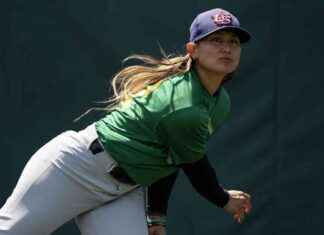South African photojournalist Peter Magubane, who for decades chronicled the violence of the racist apartheid regime as well as the 1976 Soweto student uprising, died Monday at the age of 91, his family announced.
When anti-apartheid icon Nelson Mandela was released in 1990, he became his official photographer until his election to the presidency four years later.
He was a “conscientious photographer, hard at work,” his daughter Fikile commented on the public channel SABC. He was passionate, his job was his top priority. »
“South Africa has lost an outstanding freedom fighter, storyteller and photographer. Peter Magubane fearlessly documented the injustices of apartheid,” Culture Minister Zizi Kodwa tweeted.
One of his most famous photos, taken in 1956, shows a little white girl on a suburban Johannesburg bench marked “For Europeans Only,” and her black nanny sitting on the other side.
Censorship and harassment
After starting as a driver for the trendy magazine Drum, devoted to black urban culture, he moved to the photo laboratory before positioning himself behind the lens. He documented daily life and several key moments in the fight against apartheid.
Arrested in 1969 while photographing demonstrators in front of a prison where Winnie Mandela was incarcerated, he spent 586 days in solitary confinement before being sentenced, upon his release, to cease all photographic activity for five years. In 1971, he was arrested again and imprisoned for many months for defying this ban.
Harassed by the police, from whom he often managed to escape, he widely covered the student uprising in Soweto in 1976, of which he took several of the most striking photos, which made him known throughout the world.
Peter Magubane published around fifteen books, several of which were censored during apartheid, the segregationist regime in force in South Africa from 1948 to the early 1990s.






